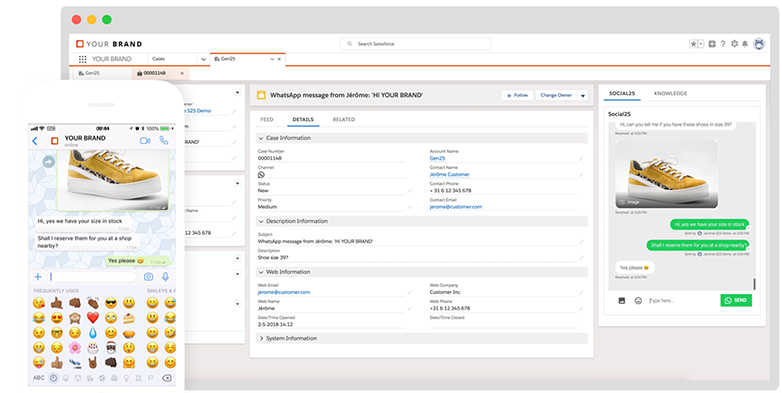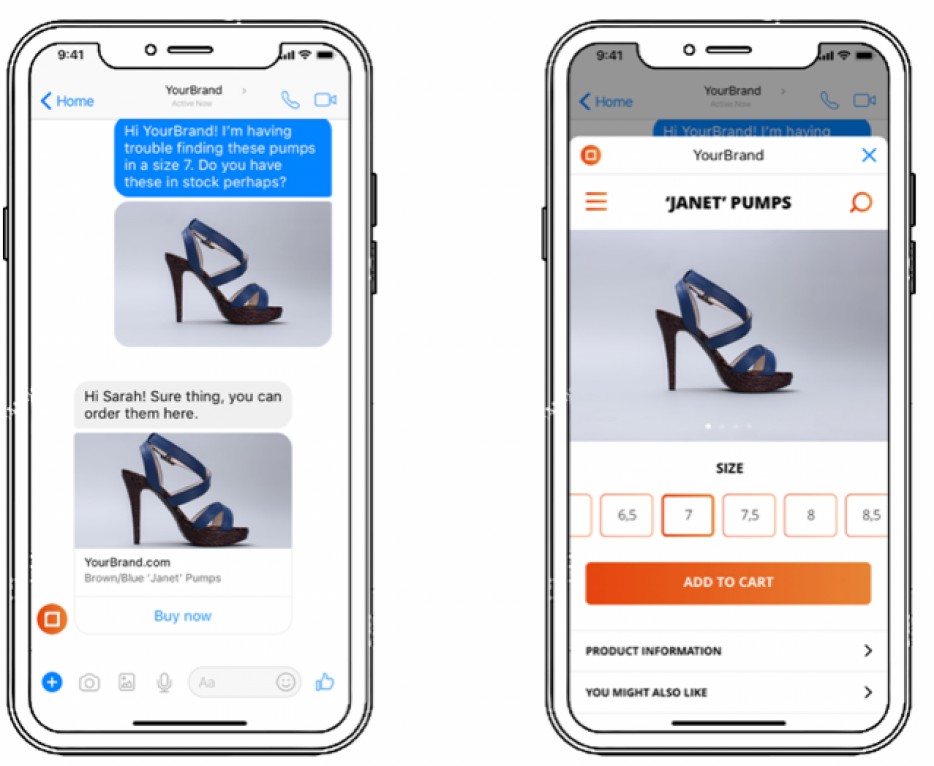In 2021, companies are again finding themselves at a crossroads, dealing with changes triggered by the pandemic, not just on the customer side but also within their own workforce. Frontline changes are happening on the customer side and many sales representatives who used to interact directly with customers in-store are now interacting with them using their phones.
The main challenge retailers face is replicating the one-to-one in-store interactions with their customers, and supporting a seamless buying experience. Resolving these challenges will require enhanced front-end and backend systems. Businesses need to quickly develop solutions to deal with these changes happening on both ends, while also ensuring these solutions integrate with their current frameworks.
In this article, we’ll cover how businesses can integrate messaging channels within Salesforce, with the goal of ensuring a seamless purchase experience on the customer and business side.
What is M-commerce?
In the US, in 2021, 53.9 percent of all retail e-commerce is expected to be generated via m-commerce (Source: Statista), and both Europe and the US are expected to be the major players in the m-commerce market before 2024 (Source: 360 Market Updates).
Mobile commerce, also known as m-commerce or mcommerce, is the use of wireless handheld devices like cell phones and tablets to conduct commercial transactions online, including buying and selling products, banking, and paying bills.
The pandemic changes in 2020 have prompted more companies in the US and EMEA to adopt mobile messaging apps like WhatsApp and Viber to interact with customers, while also enabling eCommerce transactions to happen within Salesforce.
For example, in the education sector, Education First (EF) uses a third-party messaging connector called Social25 that integrates directly with Salesforce Sales Cloud, triggering communications via a wide range of mobile messaging channels such as WhatsApp (WhatsApp Business API). Over 700 agents in 27 countries are using the solution to sell EF services in a B2C setting, directly from the Salesforce environment they’re used to, without having to switch to another application to initiate communications with their contacts.
We see similar use cases in retail with brands like G-star and De Bijenkorf (part of the Selfridges Group) where they are using the same integration to trigger customer communications using social messaging channels such as WhatsApp within Salesforce. This results in a 360º view of the customer with all related customer interactions in Salesforce, which leads to higher customer satisfaction.
The New Customer Interaction Model
A large part of the workforce is sitting at home due to COVID. They’re still part of your company, and you can continue to utilize this remote workforce by providing them access to customer data and giving them ways to interact with their contacts.
Using WhatsApp, or other social channels, to make it easy for customers to book an appointment or ask questions is the new way of customer engagement – and upselling.
Instead of interacting in a brick and mortar store, customer representatives chat on a messaging application and present certain products they think would suit the customer. They use the customer preferences and insights in Salesforce and based on that, can create a personalized offer for customers, which they can send directly to the messaging channel preferred by the customer. All messages, including the customer responses, will be stored in Salesforce; this leads to a better understanding of the demands of the customer, and improved processes within the organization.


Benefits of Messaging Integration within Salesforce
This new model of customer interaction can require a lot of behind the scenes coordination. Existing CRM systems like Salesforce can directly integrate with direct messaging channels like WhatsApp, using third-party plugin applications such as Social 25.
Third-party apps are paving the way to a seamless customer experience as they come with pre-integrated messaging channels. Using Salesforce, any company can simply add the third-party plugin directly from the Salesforce AppExchange and start communicating over popular direct messaging channels.
By using this integration directly in their CRM, companies can easily automate responses to their customers and provide consistent experience. A chatbot can be used upfront for FAQs and clear use cases such as appointment booking, thus offering the first response to the customer in record time.
This way, all company employees can trigger communication actions to answer the same question, in the same way, every time they are contacted via messaging applications, email, or phone. Since the Salesforce system is updated with all interactions with each customer, the data can be used to deepen customer insights.
With more customer insight, a more personalized approach can then be taken throughout the entire customer journey, including post-sales moments such as getting customer feedback. We see quite often that companies require customer feedback after a conversation has taken place between a customer and an employee. Traditionally they would send an email to the customer and often not receive a response. Asking a customer to check their email just to provide feedback after the transaction has already completed is often too big of an ask. When you interact via messaging, it’s easy for the customer to simply chat back with feedback before the conversation ends. Better yet, the messages can be analyzed in real-time using machine learning and assess the customer sentiment, helping the company personalize the questions to ask. For example, if the sentiment analysis shows up as high churn risk, a different action can be triggered before the conversation ends.
Moreover, sales and support team members can get customer insights and trigger communication actions directly from the same Salesforce Cloud they’re using, without switching to another application (outside the Salesforce environment). When the customer replies, the reply exists in the same record/system enabling the agent to trigger the next action, and so on, throughout the entire customer lifecycle.
What’s Coming Next?
For companies already operating online, customer conversations are starting to develop in a hybrid mode where a chatbot, often powered by AI, handles a growing proportion of the customer journey. The bot hands over the case to a human agent when the confidence level of its knowledge falls below a certain level or when the user asks to be transferred to a human agent.
We believe the future of the human-bot interaction lies in co-piloting – a process where human customer experience (CX) agents are using AI-powered bots to speed up responses and find information quickly. In turn, bots learn from the actions taken by human agents using a predictive engine that runs in the background, monitoring the questions that a particular customer is asking, and analyzing the intent.
Companies can boost chatbot performance in the Salesforce environment by using Salesforce Einstein and connecting the bot with chat apps like WhatsApp. The bot-to-customer interactions can also be triggered directly from whichever application the sales/support agents are using, such as Salesforce.
Summary
We believe that similar types of interactions will continue across the customer journey. Salesforce’s value proposition enables companies to quickly identify where each customer is in their purchase journey using insights. With the communication channels integrated directly within Salesforce, the companies can easily see the customer’s journey and trigger an engagement action to prompt the customer’s reaction at every stage of the funnel. And continue to provide a personalised journey throughout the lifecycle of the customer.
